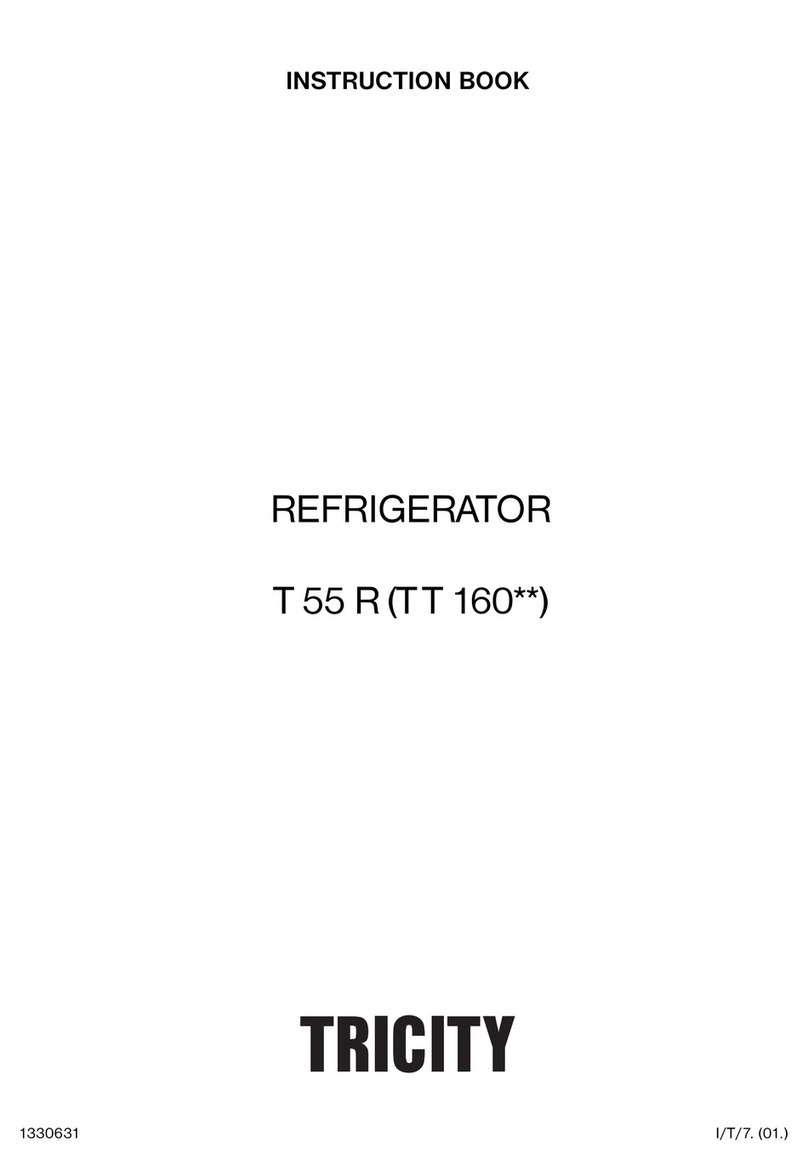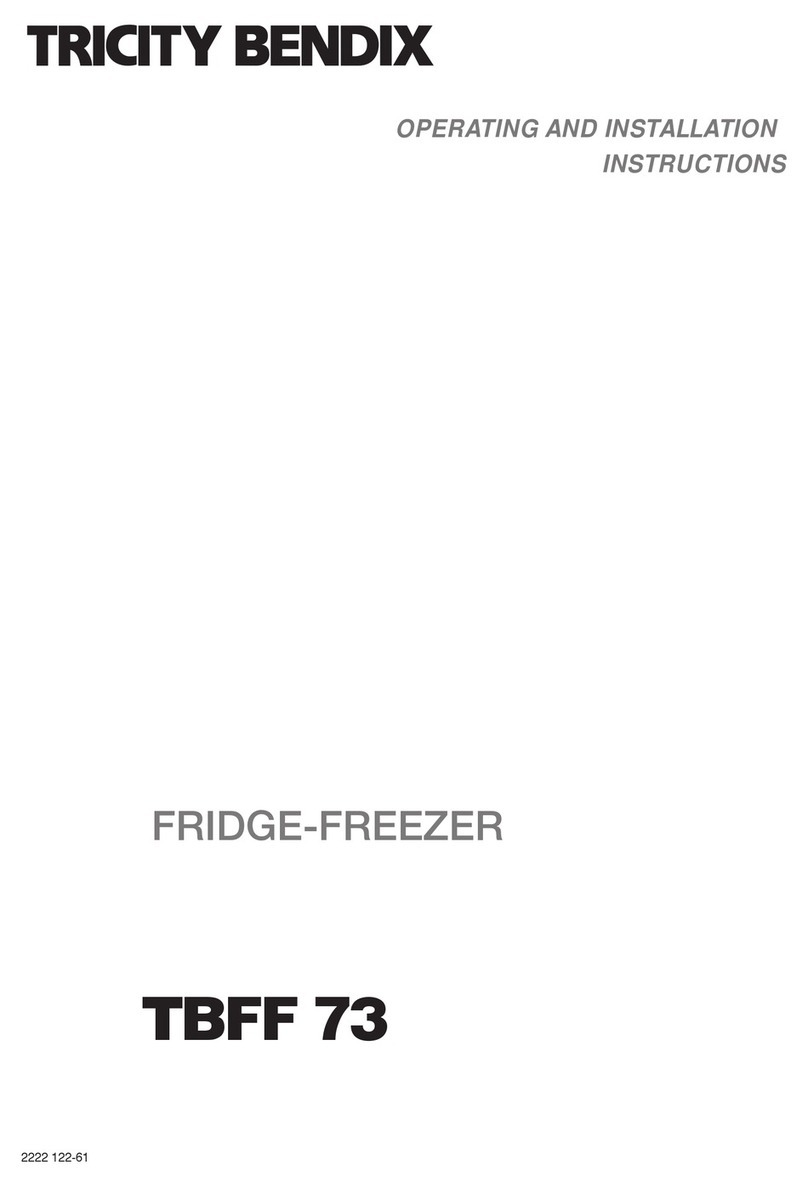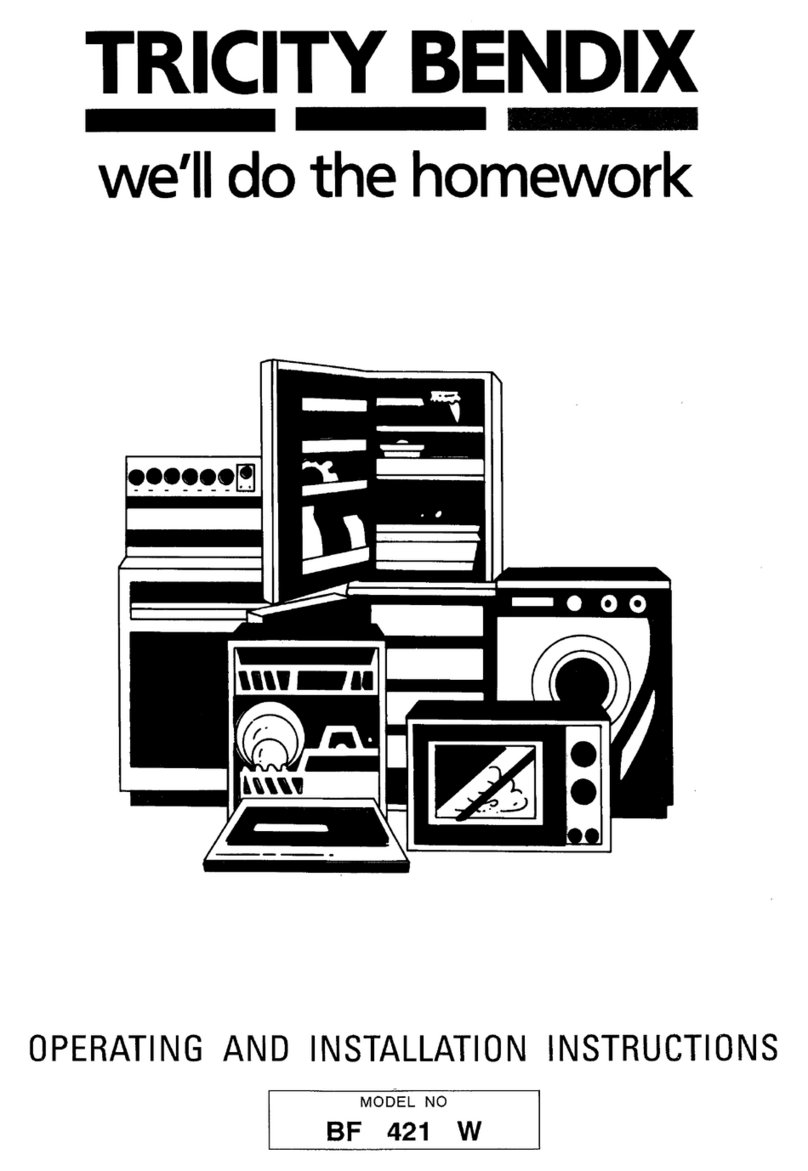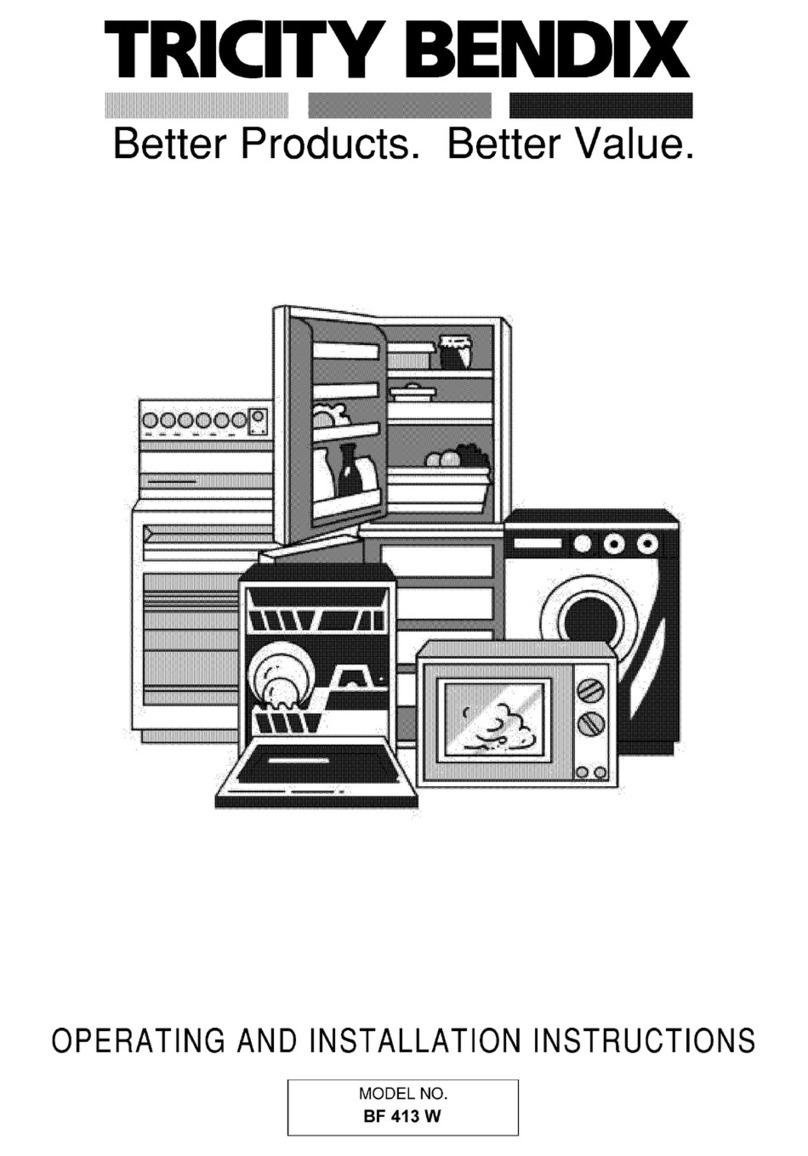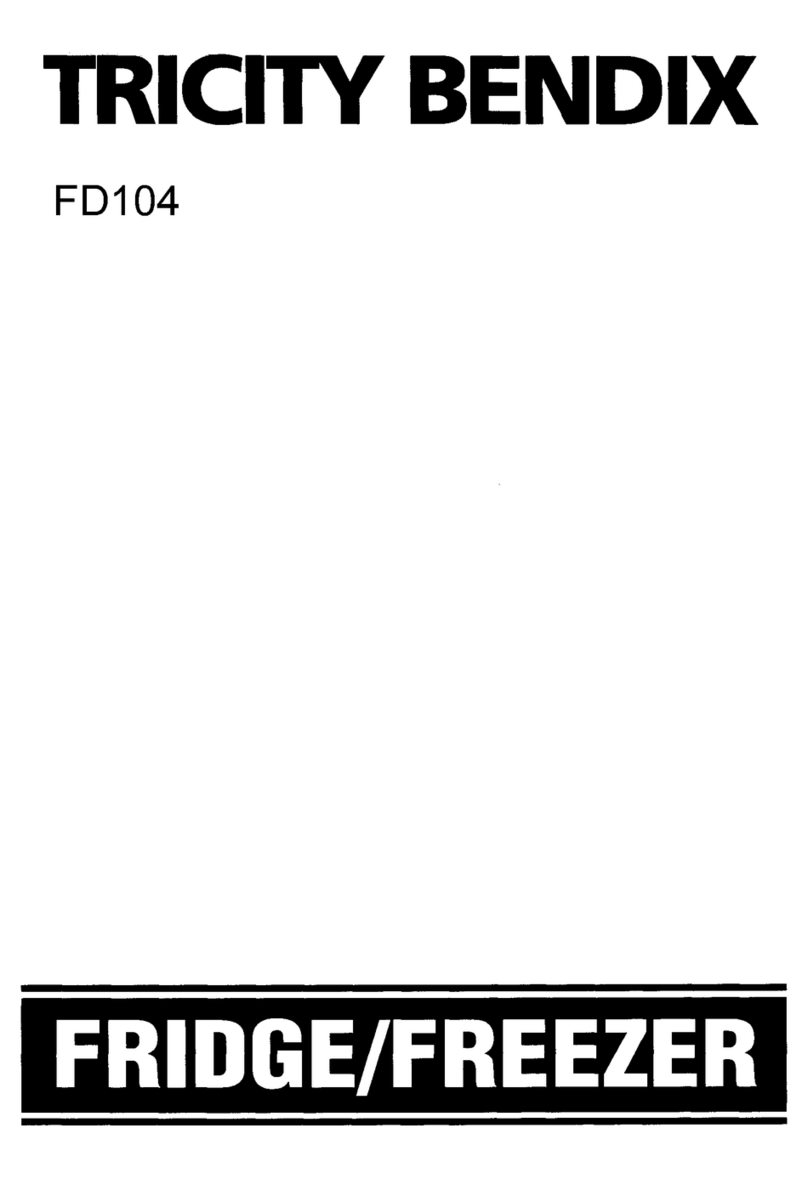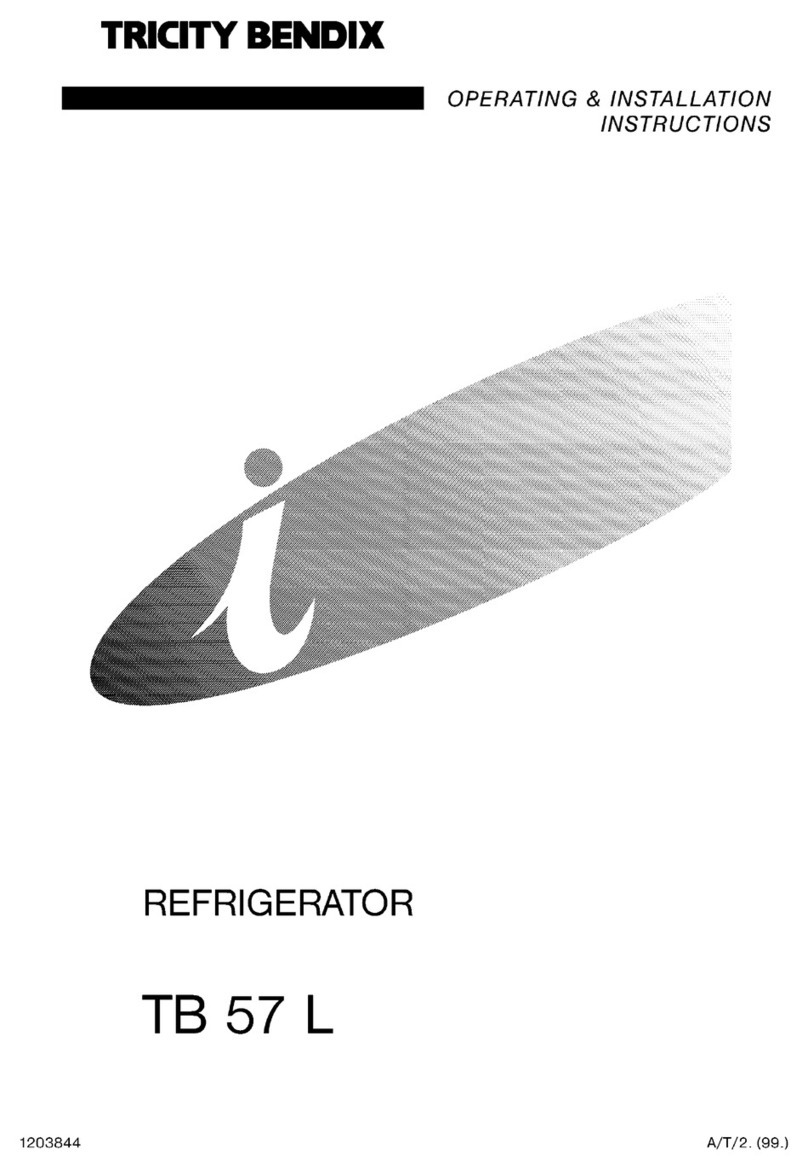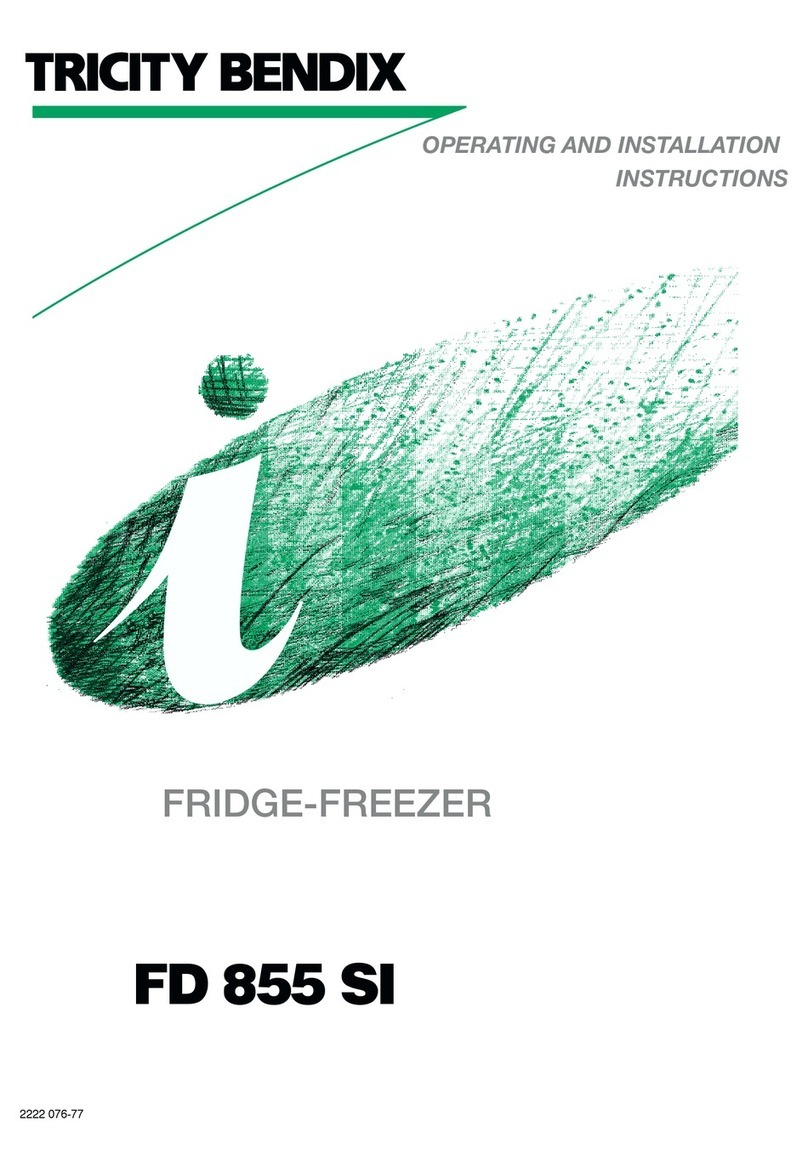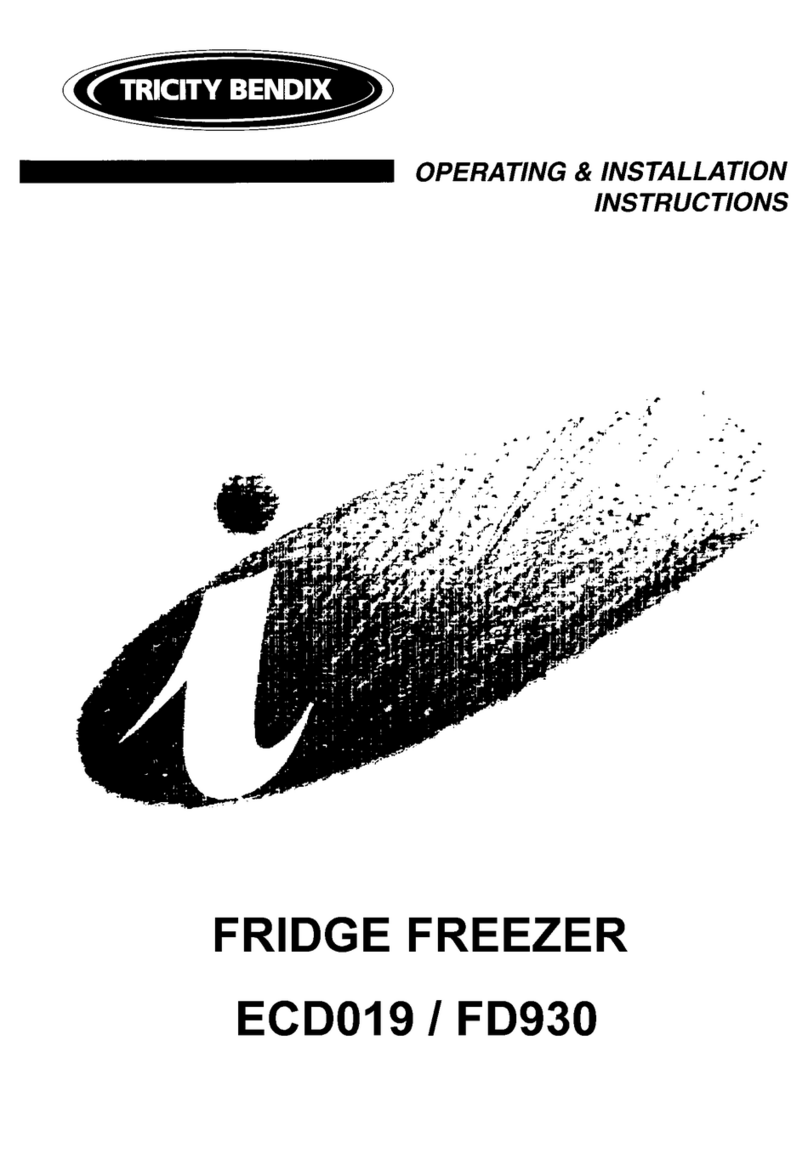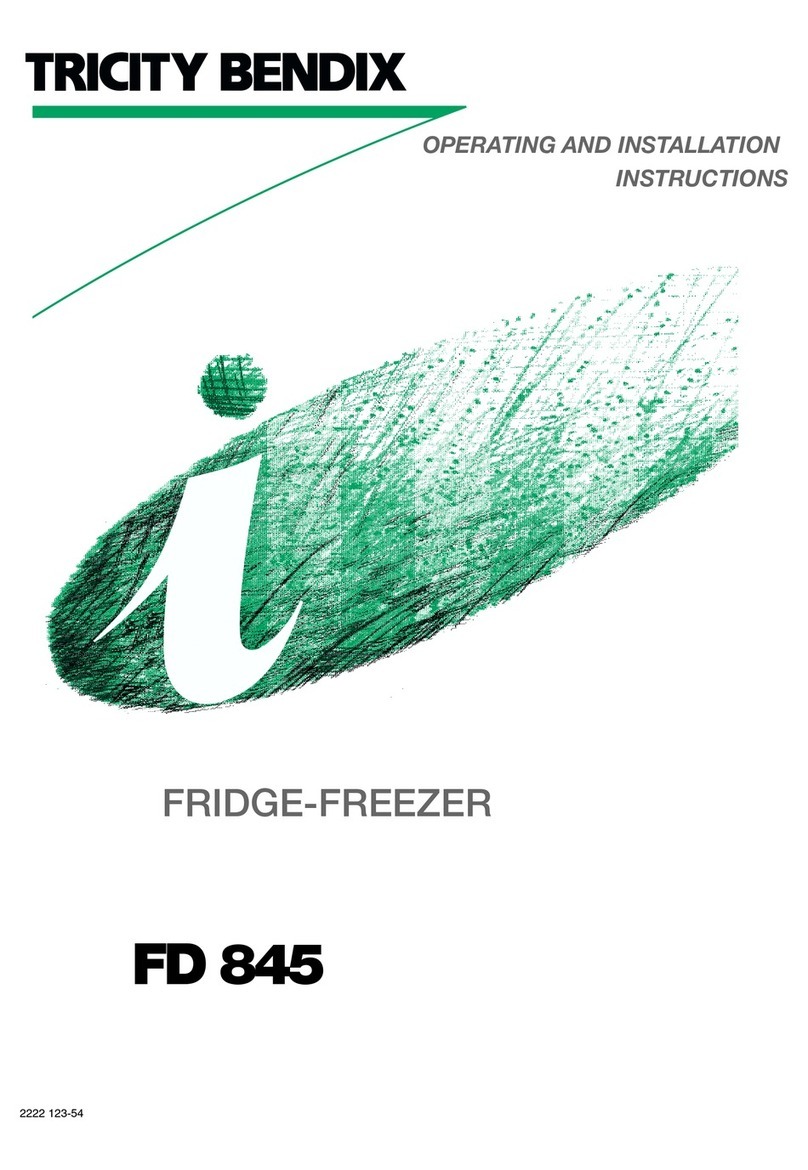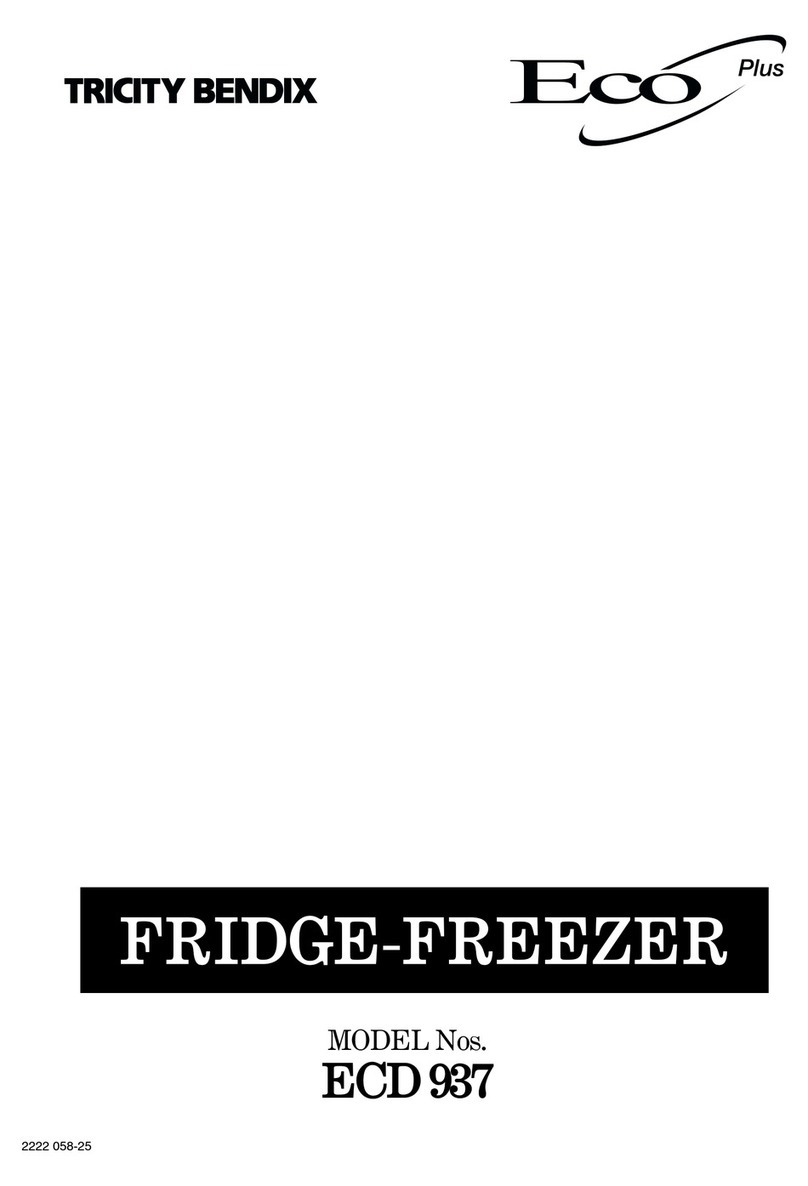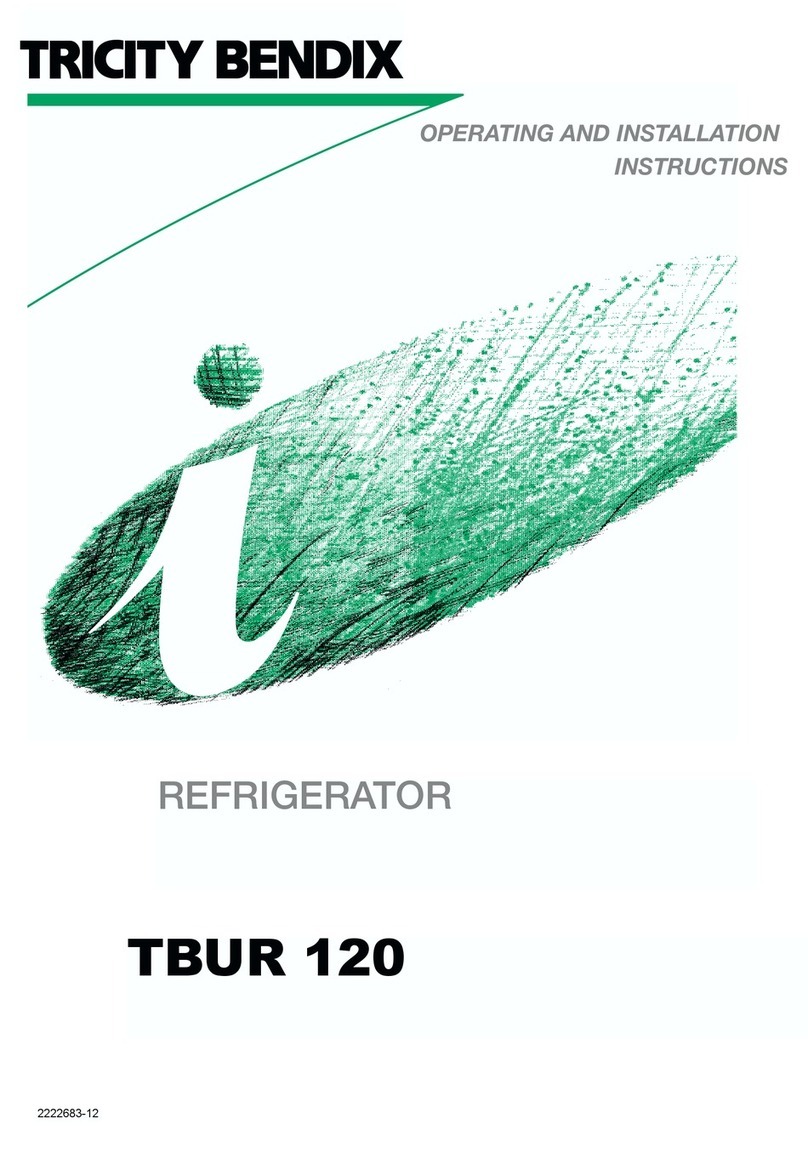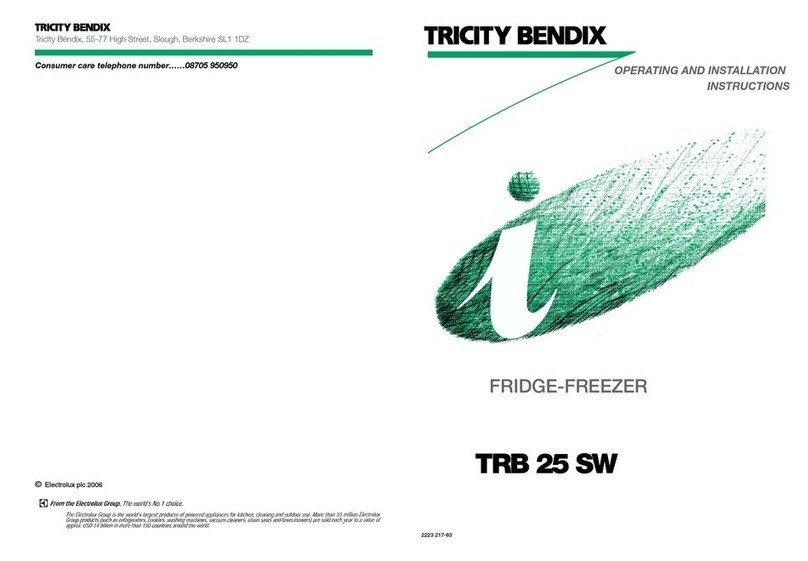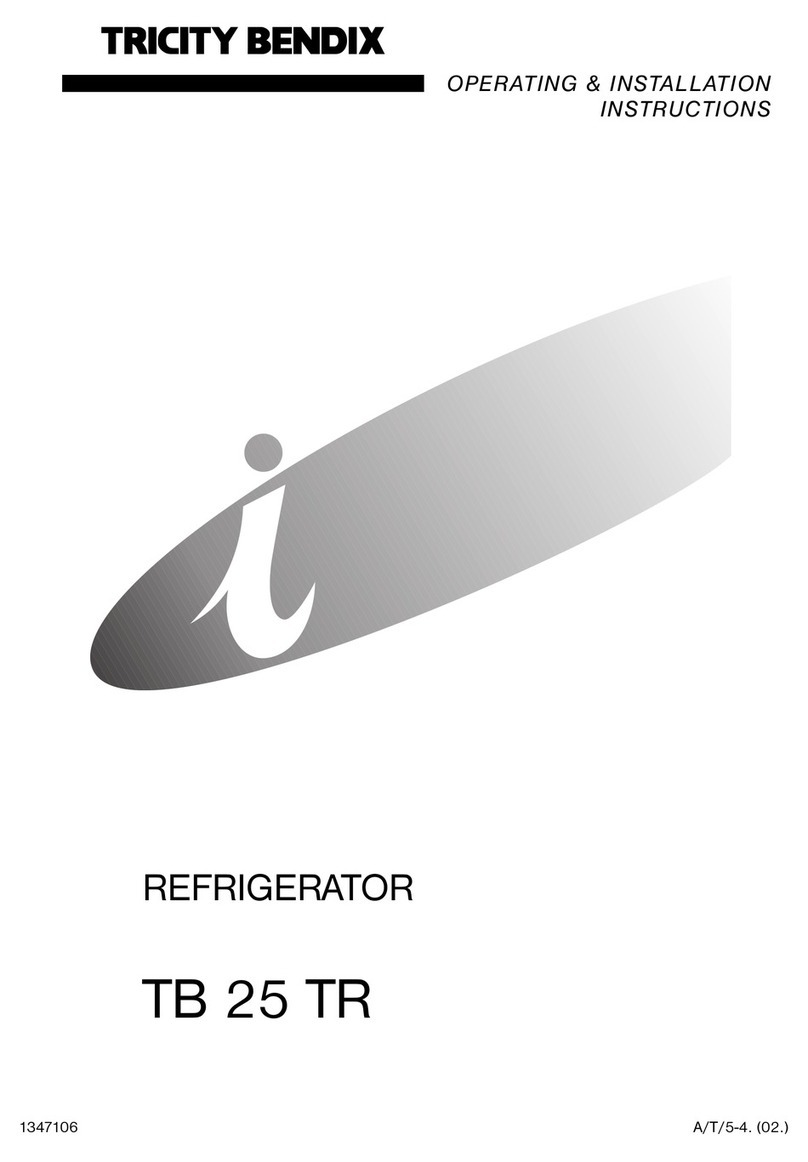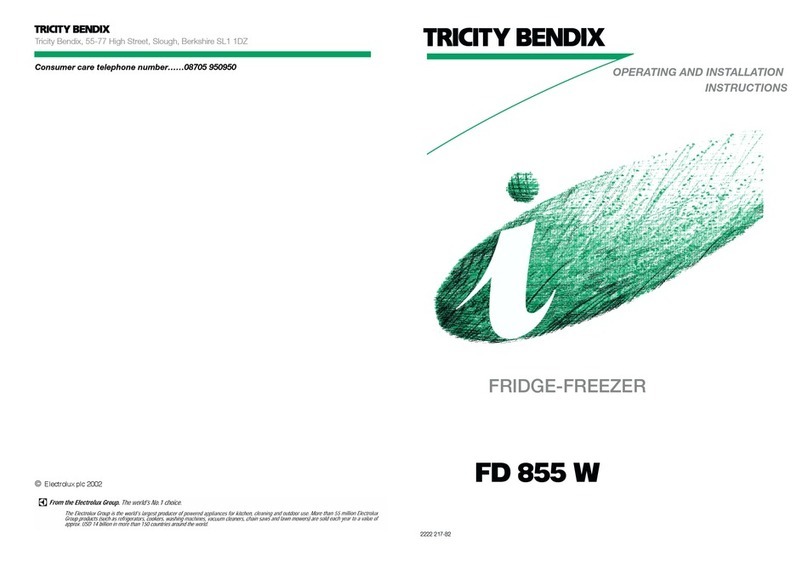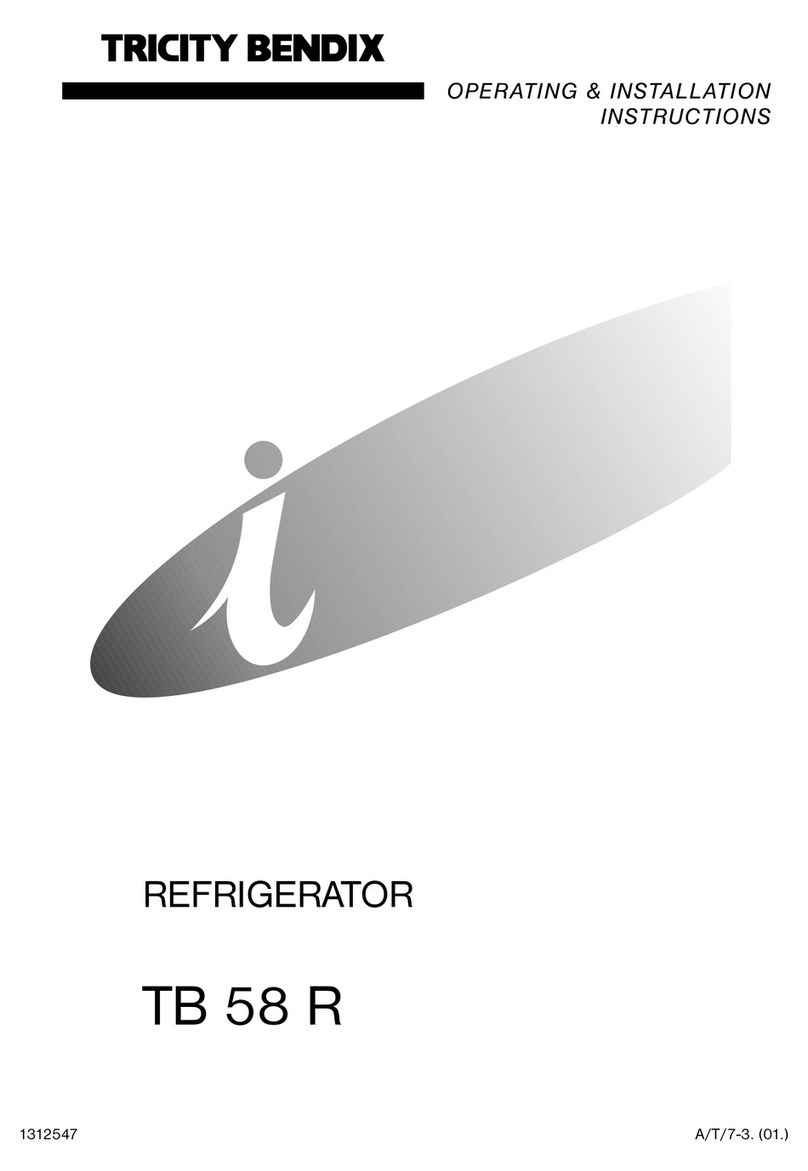7
Normal Operating Sounds
• You may hear faint gurgling or u ling sounds
when the refrigerant is pumped through the coils
or tu ing at the rear, to the cooling
plate/evaporator.
• When the compressor is on, the refrigerant is
eing pumped round, and you will hear a whirring
sound or pulsating noise from the compressor.
• A thermostat controls the compressor, and you
will hear a faint ’click’ when the thermostat cuts in
and out.
Food Storage
To o tain the est performance from your fridge-
freezer
• Do not store warm food or evaporating liquids.
• Avoid uying frozen food if you cannot store it
straight away. The use of an insulated container is
advisa le. When you arrive home place the frozen
food in the freezer immediately.
• Keep the time etween uying chilled food and
placing it in your refrigerator as short as possi le.
• Do not push food together too much, try to allow
air to circulate around each item.
• Do not store food uncovered.
• Ensure that food placed in the freezer is dated
and la elled and used in date order to ensure
that food is consumed at its est.
• Remove suspect food from your refrigerator and
clean, refer to Maintenance and Cleaning.
• Lean food keeps etter and longer than fatty food,
salt reduces the storage time.
• Wrap the food in polythene or aluminium freezing
ags or foil so that they adhere to the food and
provide an airtight seal .
• Packaging which is swollen or has traces of
refrozen water droplets on the pack could indicate
that the product has not een kept at a suita le
temperature and that it may have lost its original
quality. Partially thawed food must not e
refrozen, it must e consumed within 24 hours.
Never exceed the storage times indicated y the
manufacturer.
Energy Saving Advice
• Do not install the appliance close to sources of
heat, such as a oiler or radiator.
• Locate the appliance in a cool well ventilated
room and make sure that the air openings of the
appliance are not o structed.
• Avoid unnecessary frosting in the ca inet y
packing all foodstuffs into airtight packages
efore placing them in the freezer.
• Always leave warm food to cool down to room
temperature efore placing in the fridge.
• Food which is to e frozen (when cool) should e
placed in the fridge efore eing transferred to
the freezer.
• Thaw frozen food in the fridge. This will ensure
safer defrosting of foods and reduce the work of
the refrigeration unit.
• Try to avoid keeping the door open for long
periods or opening the door too frequently as
warm air will enter the ca inet and cause the
compressor to switch on unnecessarily often.
• Ensure there are no o structions preventing the
door from closing properly.
In the Event of a Power Failure
If there is a power failure during the storage of frozen
foods, keep the door closed. If the temperature within
your freezer should rise, do not refreeze the food
without checking its condition. The following
guidelines should assist you:
Ice-cream: Once thawed should e discarded.
Fruits & Vegetables: If soft should e cooked and
used up.
Breads & Cakes: Can e refrozen without danger.
Shellfish: Should e refrigerated and used up
quickly.
Cooked Dishes: i. e. casseroles should e
refrigerated and used up.
Large Pieces of Meat: Can e refrozen providing
there are still ice crystals remaining within them.
Small Joints: Should e cooked and can then e
refrozen as cooked dishes.
Chicken: Should also e cooked and refrozen as a
fresh dish.
HINTS AND TIPS
10
SOMETHING NOT WORKING
Symptom
No power to the appliance
The light does not come on
The temperature in the fridge or freezer section is
too high
The freezer door will not open
The compressor runs continously
Excessive frost and ice has uilt up
Noise
Water under the salad in
Solution
Check there is power at the socket.
Check there is not a power cut y checking the
household lights.
Check the fuse has not lown.
Ensure that the ul is correctly fitted.
Replace the ul if it has lown.
Check the door light switch is not jammed.
Check the thermostat control kno in the fridge is
turned to the correct setting relative to am ient
conditions.
Check the am ient temperature is within the
appliance’s operating limits, please refer to the
installation section in this instruction ook.
Relocate the appliance if necessary.
Has door just een opened? If so leave for a few
minutes to allow the air pressure to equalise.
Adjust the thermostat control kno to give correct
temperature control. See “Setting the temperature”.
Check that the doors are closed.
Large quantities of food have recently een placed in
the ca inet and/or door is frequently opened.
Check that air ventilation is not o structed.
Ensure the doors are not left open.
Check that nothing is preventing the doors from
closing.
Is the door gasket intact and clean.
Has advised periodic defrosting een carried out.
Refer to normal operating sounds.
Check the drain hole is not locked. (see
Maintenance and Cleaning).
Important: If the appliance is not working correctly, please carry out the following checks efore calling out an
engineer.
SERVICE AND SPARE PARTS
If you require further information regarding the appliance, the terms and conditions of the guarantee, or wish to
call out engineer, please contact Expert Appliance Care y telephoning:-
0870 9099100
